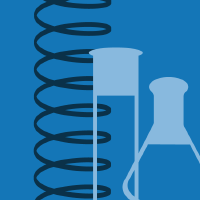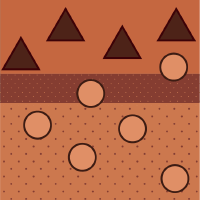Topic Menu
► Topic MenuTopic Editors


Green Twist in Solvent Extraction and Separation of Metal Species
Topic Information
Dear Colleagues,
The aim of this topic is to provide an original and unique environment for researchers in academia and especially in industry to share and discuss their cutting-edge results of all novel approaches including ionic liquids, covering their in-depth characterization and/or modelling with the respect of the green scope, to their potential applications, not only in the liquid metal extraction and separation chemistry. The global objective is to propose so far unexplored and versatile new strategies: the optimization of the aqueous-biphasic systems composed of water (or not) and an organic phase incorporating “green” extracting moiety/moieties dissolved in different adopted media. Needless to say, these dissimilar “liquid compounds” possess unique chemical properties useful for a wide range of applications in various fields as diverse as solvent extraction, hydrometallurgy, environmental remediation and nuclear sciences, chemical engineering technology, metallurgy and recycling pinpointed the green concept, energy storage, biotechnology, etc. On the other hand, the design of original molecules has a long history in the analytical and solvent extraction chemistry of metal ions, with synthesized multicentre ligands, possessing high extraction efficiency and having a unique chemical structure. In all the presented studies, it is highly appreciated if the environmental gain is clearly outlined.
Dr. Maria Atanassova
Dr. Kojiro Shimojo
Topic Editors
Keywords
- ionic liquids
- green separation
- lanthanoids
- chelating ligands
- modernized concepts
- unusual reagents
- recycling of valuable metals
- sustainable liquid media
- ion exchange
- cutting edge methods
- analytical solutions
- advanced extraction mechanism
- circular economy
- green infrastructure
Participating Journals
| Journal Name | Impact Factor | CiteScore | Launched Year | First Decision (median) | APC |
|---|---|---|---|---|---|

Analytica
|
- | 1.8 | 2020 | 12.8 Days | CHF 1000 |

Membranes
|
3.3 | 6.1 | 2011 | 16.6 Days | CHF 2200 |

Molecules
|
4.2 | 7.4 | 1996 | 15.1 Days | CHF 2700 |

Polymers
|
4.7 | 8.0 | 2009 | 14.5 Days | CHF 2700 |

Separations
|
2.5 | 3.0 | 2014 | 12.4 Days | CHF 2600 |

MDPI Topics is cooperating with Preprints.org and has built a direct connection between MDPI journals and Preprints.org. Authors are encouraged to enjoy the benefits by posting a preprint at Preprints.org prior to publication:
- Immediately share your ideas ahead of publication and establish your research priority;
- Protect your idea from being stolen with this time-stamped preprint article;
- Enhance the exposure and impact of your research;
- Receive feedback from your peers in advance;
- Have it indexed in Web of Science (Preprint Citation Index), Google Scholar, Crossref, SHARE, PrePubMed, Scilit and Europe PMC.

